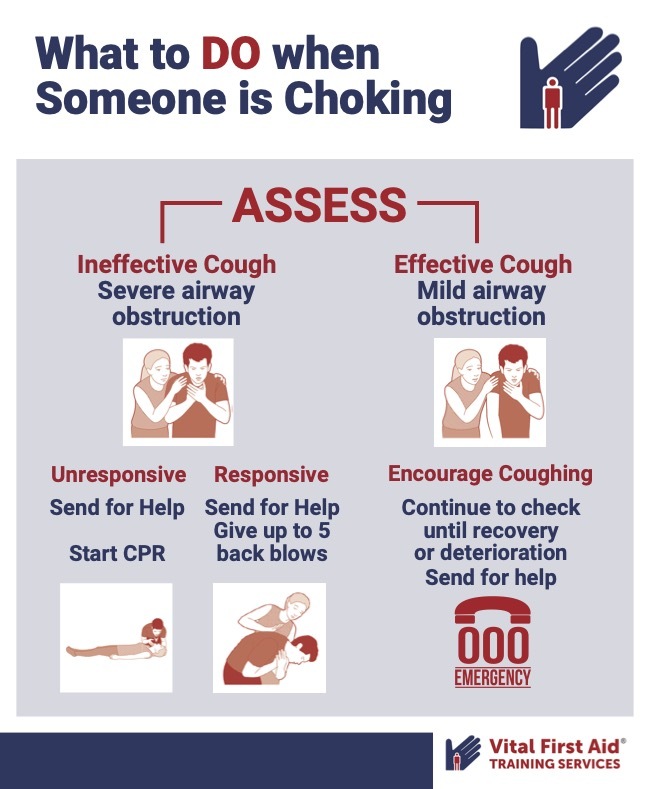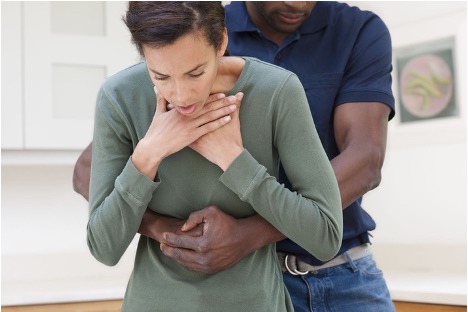Common Signs of Choking
Choking incidents are a serious concern to elders as it can quickly lead them to life-threatening situations. This is why it is important to know the signs of choking and ensure their safety.
Below is the list of signs that a choking individual may display:
1. Extreme Anxiety
Panic can be observed when an elder is choking. This distress is often a result of the sudden, unexpected sensation of not being able to breathe.
2. Universal Choking Sign
The universal distress signal for choking is clutching the throat with one or both hands. This is an instinctive response to the discomfort due to obstruction in their airway.
3. Gagging and Coughing
In attempts to clear the airway, a choking elderly individual may show signs such as gagging and coughing. Such actions may induce pain in the throat and chest of the elder, leaving them feeling weak.
4. Wheezing or Odd Noises
The partial blockage to the airway restricts the flow of air, causing wheezing or abnormal breathing noises.
5. Gasping and inability to speak
Choking significantly impairs the ability to breathe and speak. With the shortness of breath, an elderly person is not able to vocalise their distress or call for help.
6. Colour changes in face
With restricted breathing and lack of oxygen coming into the body system, a choking individual’s face would soon show colour changes, like lips becoming blue and face becoming red.
If there is partial airway obstruction, the senior will still be able to breathe, speak and cough to some extent. However, with a complete airway obstruction, the individual will show signs such as:
- No sound of breathing
- Vigorous attempts at breathing
- Cyanosis (turning pale, then blue)
- Inability to speak or cough
- Altered state of consciousness
It is critical that action is immediately taken when choking starts. On choking countermeasures, check out the next blog: ‘How to perform First Aid for Choking’.


